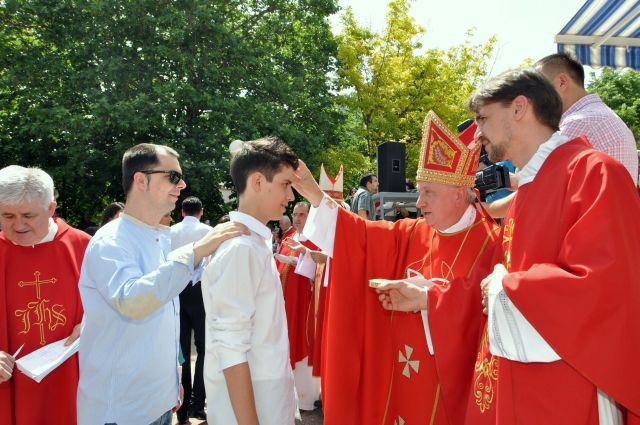“What’s your confirmation name?” is a peculiarly Catholic icebreaker. The question is based on generations of Catholic children choosing a saint’s name for confirmation. Many children see the custom as an opportunity to express individuality (“See, Father, there is a St. Wolfgang!”), while religious educators often use the tradition to introduce students to the communion of saints.
Earlier in the Christian era, when missionaries were still evangelizing Europe, church leaders promoted the practice of giving saint names to newborns as a way to discourage naming children for pagan deities. While the church still encourages parents to give newborns saint names, these days all that’s required canonically is that a name not be contrary to “Christian sensibility.”
Although the historical record is unclear on how or when this practice began, we do know taking a new Christian name at confirmation is a centuries-old custom. It can be traced back to at least the 16th century, when records indicate St. Edmund Arrowsmith used his confirmation name in preference to his baptismal name, Brian.
There’s some speculation that the years-long separation between baptism and confirmation might have had something to do with it. Confirmation began to be treated as a coming-of-age ritual, with the new name signifying becoming an adult.
Choosing a new saint name at confirmation isn’t mandated. In some areas, church leaders are starting to recommend that candidates use their baptismal names as confirmation names, especially if the candidate has already been named for a saint. Baptism and confirmation are both initiation sacraments; keeping the same name reestablishes a link between these sacraments.
A new saint name can have value though. Those who don’t have a saint name may choose their own. Picking a new name for a saint one feels close to is a way to promote devotion to saints and even to deceased Christians who also carried the saint’s name. Arrowsmith preferred Edmund because he shared that name with his favorite uncle. In other cases, candidates may choose saints with whom they share commonality. A musician might choose St. Cecilia. A cook might gravitate to St. Lawrence, patron of cooks because he was grilled over an open fire.
The lack of a mandate around confirmation names allows free rein in choosing saintly patrons. Identification with saints is not tied to gender, and there is well-established precedent for candidates choosing names not commonly associated with their biological sex. When author Toni Morrison, born Chloe Wofford, converted to Catholicism at 12, she chose St. Anthony of Padua as her patron. Eventually, she chose to go by Toni in his honor.
This article also appears in the April 2025 issue of U.S. Catholic (Vol. 90, No. 4, page 49). Click here to subscribe to the magazine.
Image: Wikimedia Commons












Add comment